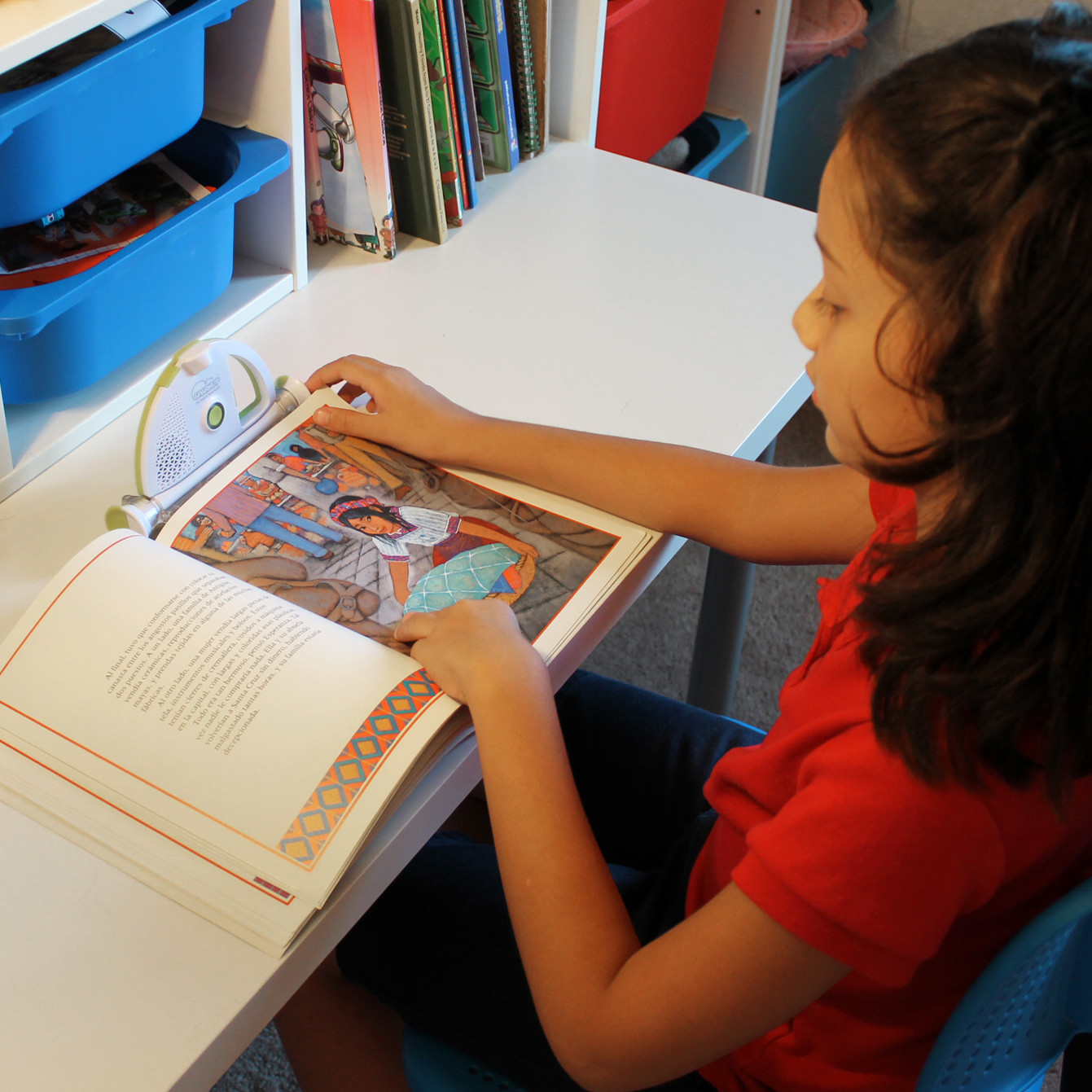The advantages of bilingualism and learning more than one language have been proven time and time again. However, when it comes to children with special needs or speech delays, many doctors and therapists often recommend that parents stick to just one language. This view, while common, can overlook the profound benefits of maintaining a home language, especially when it serves as a vital connection to family, culture, and heritage. As a mother of a daughter diagnosed with autism and a speech impairment, I want to share how raising her bilingually has not only been possible but has also enriched her development in countless ways. For us raising bilingual kids was an important part of raising third culture kids, since both my husband and I are from Guatemala and we speak Spanish at home. If you’re a parent considering raising bilingual children, especially when facing the challenges of speech delays or developmental disabilities, this guide will provide insight, strategies, and encouragement to keep your home language alive.

Keeping the Home Language Alive: Why It Matters
Maintaining a home language is not just about communication; it’s about preserving a connection to your family’s culture, traditions, and identity. For first-generation immigrants like us, speaking Spanish at home was a non-negotiable part of raising third-culture kids. The fear of losing this connection, especially when faced with recommendations to abandon the home language due to speech delays, can be overwhelming. However, numerous studies have shown that children, even those with developmental disabilities, benefit from being bilingual. It helps them stay connected to their heritage, boosts their self-esteem, and provides them with unique opportunities in life.
It pains me to see so many children born to first generation immigrants, like ourselves, who never learn a second language or even children born in other countries who loose the second language when they come to the United States. Countless times I have heard pediatricians, teachers and therapists tell a parent who’s child seems to be behind developmentally or who has language and/or speech problems that they should just talk to that child in English. This recommendations are done without taking into account that the home language is also a family connection and a connection with that child’s roots and culture. If speaking your language is important to you and if you want your child to speak that language and maintain that connection with his heritage do not follow the advice of people who do not know the circumstances of your family and the importance the home language has for the social and emotional development of children who’s parents speak a language other than English at home.

I see all the time articles that talk about just focusing on one language, these articles base themselves on unfunded assumptions, short term budgets and myths. All over the wold people strive to learn more than one language in order to open doors for themselves and for their children. Specially if you are a parent who’s native language is other than English, you have in your hands the greatest gift for your children: the opportunity to teach them a second language at home.
Even if your child has a developmental disability or a language impairment there is no reason to limit to speaking to him only in English. Every child, regardless of his abilities or disabilities should have the right to participate and communicate fully with his family and his community, if this requires him to speak two languages then you should consider bilingualism for him or her.
The Benefits of Bilingualism for Children with Speech Delays
A growing body of evidence supports the importance of keeping a child’s native or home language alive even if that child has special needs and/or a speech delay . For our daughter, maintaining bilingualism has been crucial. Learning Spanish has not only helped improve her speech but also bolstered her self-confidence. We chose to teach my daughter two languages and to keep Spanish alive at home. She is now 13 and she speaks and reads in both English and Spanish. Learning Spanish has helped her improve her speech, it has helped her build relationships and it has boosted her self esteem. It also provides her with opportunities other kids don’t have and it has given her a strong sense of identity and of self. She identifies with other Latino kids in school and knowing Spanish and being able to talk to them has become an ice breaker and a valuable tool for her social skills and for building relationships.
We travel to Guatemala often, where she can independently navigate through different situations, has been a huge boost to her self-esteem. Being able to read menus, order food, and interact with people in Spanish has reinforced her language skills and deepened her cultural understanding. These experiences would not have been possible if we had followed the advice to only speak English at home.

My kids recently spent a week at a summer day camp in Antigua Guatemala and they loved making friends with kids in Guatemala and learning new things about the environment and the culture as they strengthened their Spanish language skills and all of this was possible because we’ve kept Spanish alive at home regardless of the hurdles and other people’s opinions about our decision. We plan to spend more summers abroad in Guatemala to reinforce Spanish and so that the kids can get acquainted with the culture and understand where they come from.
Strategies for Teaching a Second Language to Children with Autism
We use many strategies for teaching our kids Spanish and it wasn’t always easy but it was well worth it. I have written before about bilingualism and autism and how we made it happen, but I thought it was time to give you all an update on how things have progressed and how our decision of teaching my daughter Spanish is the best decision we could have made for her!
For children on the autism spectrum, learning a second language can be challenging, but with the right strategies, it’s entirely achievable. Here are some approaches that have worked well for us:
Vocabulary Building with Flashcards and Stock Photos
Using visual aids like flashcards and images from stock photo websites like Dreamstime.com can be incredibly effective for vocabulary building. Associating words with images helps reinforce memory and comprehension, particularly for visual learners. For example, creating a set of flashcards with common household items labeled in both Spanish and English can help children recognize and memorize vocabulary in a fun and engaging way.
Using Bilingual and Spanish Books to Build Language Skills
In our journey to teach our children Spanish, incorporating bilingual and Spanish books played a crucial role. We started with picture books in Spanish that labeled everyday objects, which helped our daughter with autism connect words to their meanings visually. As she mastered these basic terms, we introduced simple bilingual books where the narrative was presented in both English and Spanish. This allowed her to follow the story in English while simultaneously being exposed to Spanish, creating a natural bridge between the two languages. By gradually increasing the complexity of the books, we were able to build her vocabulary and comprehension skills effectively, all while maintaining a connection to her cultural roots. Here are some of our favorite Spanish and bilingual books for children.
Labeling Practice at Home
Labeling objects around the house in both languages is another great method. For instance, placing labels on items like “la puerta” (the door) or “la mesa” (the table) provides constant exposure to the language in a practical context. This consistent reinforcement helps children on the autism spectrum build a stronger vocabulary in both languages.
Incorporating Technology and Media
Using technology and media, such as bilingual apps, YouTube videos, or interactive eBooks, can make learning a second language more accessible and enjoyable for children with autism. For example, apps that include interactive stories or games in Spanish allow children to learn at their own pace while engaging with content that interests them. For great ideas and resources check out my article about language learning and the internet: what to look for.

Tips for Parents: Maintaining Consistency and Patience
One of the most important aspects of raising a bilingual child, especially one with a speech delay or autism, is consistency. Here are a few tips to keep in mind:
- Consistency is Key: Regular exposure to both languages is crucial. Even if it seems challenging at first, sticking to your routine will pay off in the long run.
- Be Patient and Flexible: Every child learns at their own pace, especially when they have special needs. Patience is essential. Be open to adjusting your approach based on your child’s progress and comfort level.
- Celebrate Small Wins: Recognize and celebrate the small milestones in your child’s bilingual journey. This can be as simple as successfully using a new word in context or engaging in a conversation in the second language.
- Setting Goals: When we first started on our journey to teach our daughter Spanish we set specific goals and this really helped us to stay on track. Check out my article about setting bilingual goals for our kids.
Encouraging Language Development in Social Settings
Social interaction plays a critical role in language development. Encouraging your child to use their bilingual skills in social settings can reinforce what they’ve learned and boost their confidence.
- Playdates with Bilingual Peers: Organizing playdates with other bilingual children can create a supportive environment where your child can practice their language skills. For some great ideas check out my article about how to use playtime to reinforce the Spanish language at home.
- Cultural Immersion: If possible, immerse your child in environments where the second language is spoken. This could be through travel, community events, or language-focused summer camps.
Learning a Second Language for Kids on the Autism Spectrum
Children with autism often have unique learning styles that require tailored approaches to language acquisition. Here are additional strategies specifically for kids on the spectrum:
- Structured Learning Environments: Children with autism often thrive in structured environments. Consider setting up a dedicated learning space at home where language learning activities are conducted regularly.
- Incorporating Interests: Utilize your child’s special interests to make language learning more engaging. For example, if your child loves animals, use Spanish vocabulary related to animals in your lessons.
- Positive Reinforcement: Use positive reinforcement to encourage language use. Praise your child when they attempt to use the second language, even if it’s not perfect.
The Long-Term Benefits of Bilingualism
Teaching your child a second language, even in the face of speech delays or developmental challenges, is a decision that can offer lifelong benefits. Not only does it provide them with valuable communication skills, but it also deepens their cultural connection and enhances their self-esteem. By using strategies like vocabulary building with flashcards, labeling, and consistent practice, you can help your child become bilingual in a way that feels natural and achievable.
Bilingualism is not just about language; it’s about identity, culture, and the ability to connect with a broader world. As a parent, your dedication to maintaining the home language will provide your child with tools and experiences that will enrich their life in countless ways.


